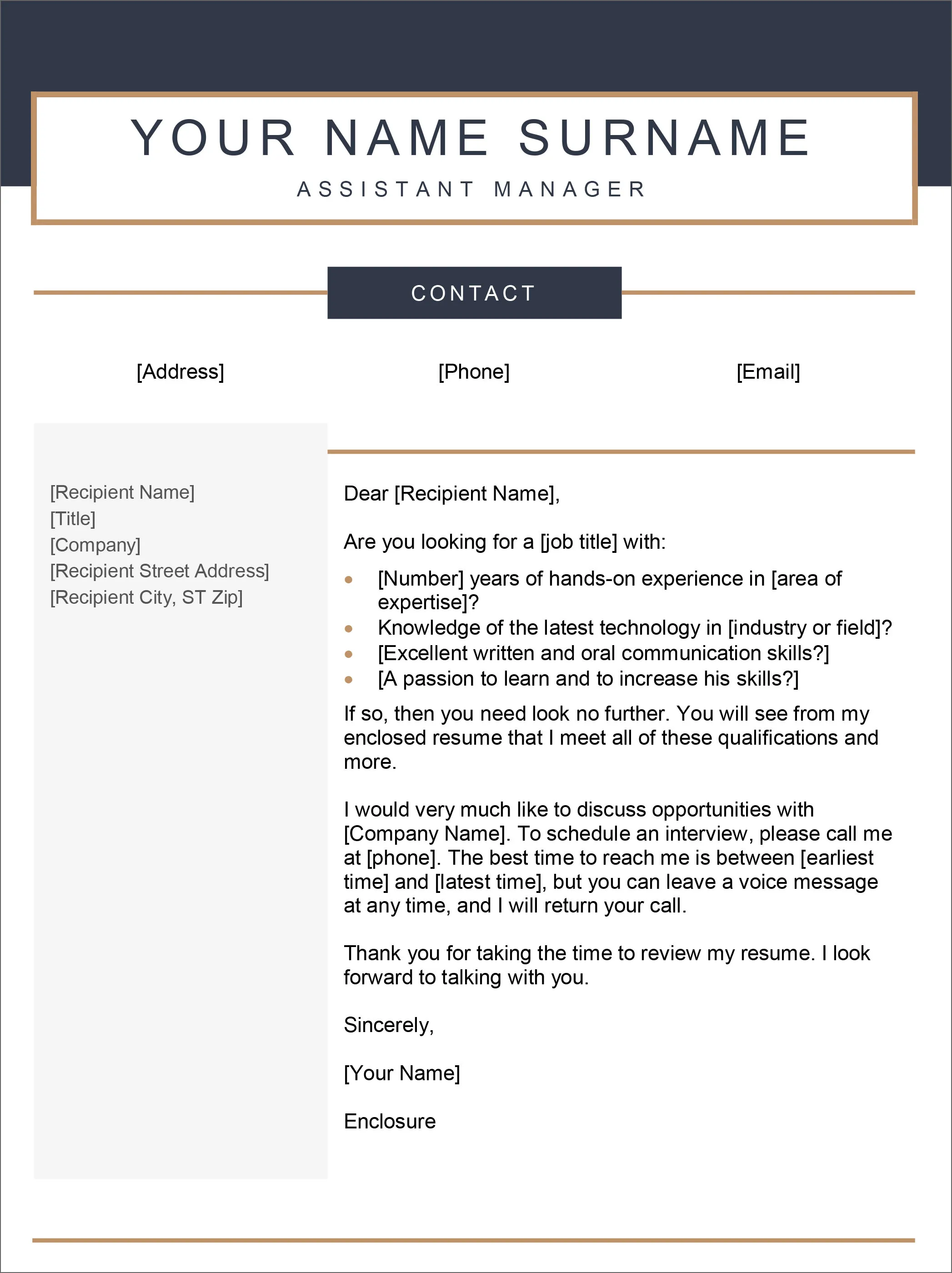What is a Resume Cover Letter Template?
A resume cover letter template is a pre-designed document that serves as a starting point for crafting your own cover letter. It provides a structured framework, including placeholders for your personal information, the hiring manager’s details, and the body of the letter. The primary purpose of a cover letter template is to streamline the process of creating a professional and effective cover letter, saving you time and ensuring that you include all the necessary elements. They are designed to help job seekers present their qualifications and express their interest in a specific role. These templates usually come with suggested formatting, font styles, and layout options, making it easier to create a polished and visually appealing document that reflects well on your application.
Why Use Microsoft Word for Cover Letter Templates?
Microsoft Word is a widely accessible and versatile word processing software that offers a range of benefits for creating cover letters. Its widespread availability makes it easy to access and use on various devices, ensuring that you can work on your cover letter from almost anywhere. Word provides an intuitive user interface, allowing you to easily customize and edit the template to match your specific needs and qualifications. It offers a vast array of formatting options, including font choices, paragraph styles, and layout adjustments, enabling you to create a visually appealing and professional-looking cover letter. Additionally, Word integrates seamlessly with other Microsoft Office applications, making it easy to save, share, and print your cover letter. The software’s ability to save documents in different formats also allows for flexibility in sharing your cover letter with potential employers.
Benefits of Using Templates

Using resume cover letter templates offers several significant advantages in your job search. Templates save you considerable time and effort by providing a ready-made structure, eliminating the need to create a cover letter from scratch. They ensure you include all essential elements, reducing the risk of overlooking crucial information like your contact details, skills, and the reasons for your interest in the position. Templates guide you through the formatting process, ensuring a professional and visually appealing document. This is particularly helpful if you’re unsure about layout or design. The use of templates can lead to a more polished and professional cover letter. They also help to maintain consistency in your job application materials, aligning your cover letter with your resume and other documents.
Top 5 Microsoft Word Resume Cover Letter Templates
Choosing the right template can significantly enhance your cover letter. Here are five excellent choices available in Microsoft Word to help you make a great impression:
Template 1 The Modern Template
The modern template is characterized by its clean lines, contemporary design, and use of subtle visual elements to draw the reader’s eye. It often features a minimalist aesthetic with ample white space, making it easy to read and visually appealing. This type of template is suitable for a wide range of industries but is particularly effective for roles in tech, design, and other fields where a modern and sophisticated look is valued. Consider this template if you want to showcase your professionalism while also demonstrating an awareness of current design trends. To customize this template, focus on using a professional font and incorporating your personal brand through your choice of color or subtle design elements.
Template 2 The Professional Template
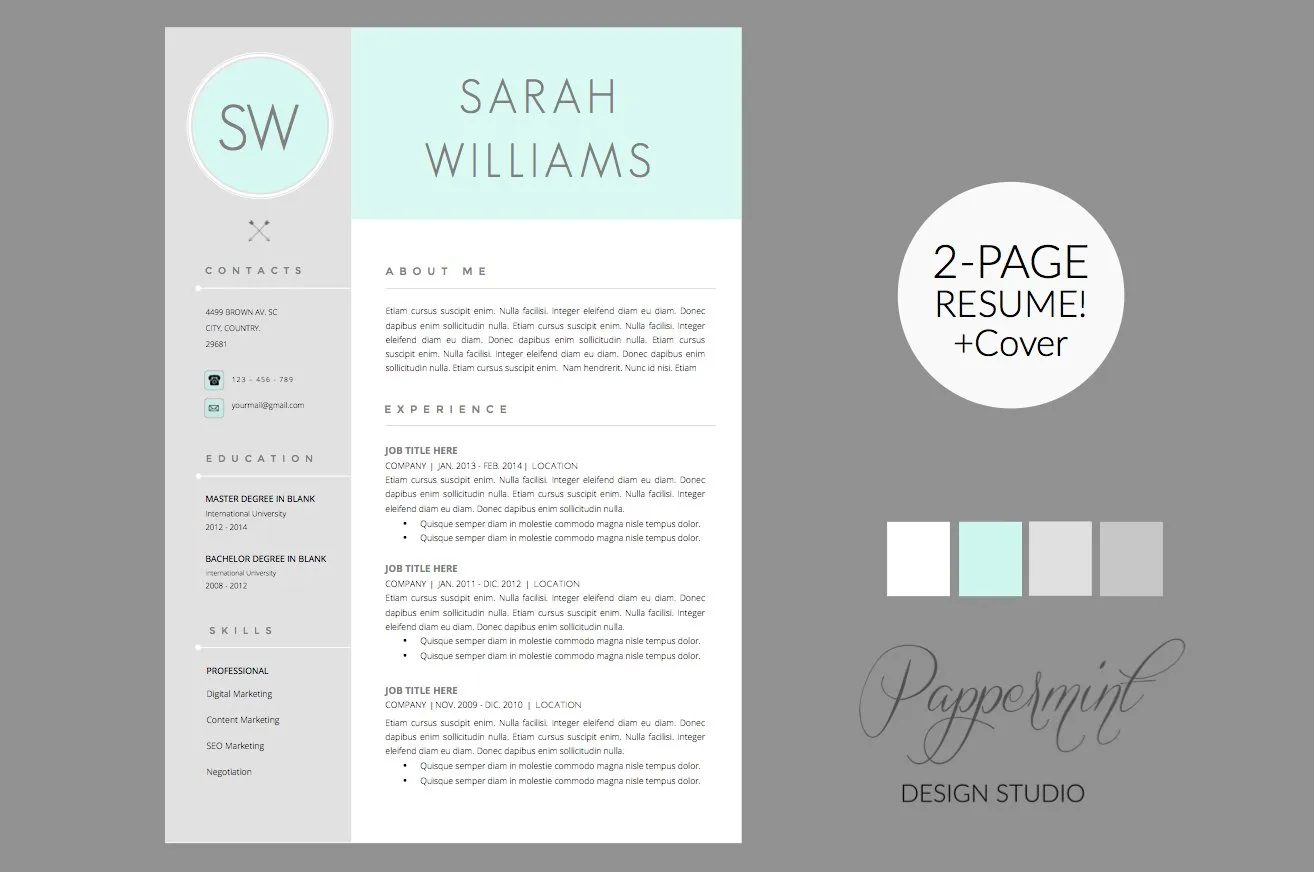
The professional template is designed to present a polished and formal appearance, ideal for industries like finance, law, and consulting. It typically features a straightforward layout, with clear headings and a focus on content clarity. Key characteristics of this template include the use of conservative fonts, such as Times New Roman or Arial, and a clean, uncluttered design. It emphasizes readability and ensures that the reader can easily find the information they need. To customize a professional template effectively, ensure that you maintain a formal tone throughout your cover letter. Focus on presenting your qualifications and experience concisely, highlighting your achievements and skills related to the job requirements.
Template 3 The Simple Template
The simple template prioritizes clarity and ease of reading, making it a versatile choice for various job applications. It features a basic layout with minimal design elements, ensuring that the focus remains on the content of your cover letter. These templates typically use a standard font size and style and utilize ample white space to prevent the document from appearing cluttered. The advantage of a simple template is its ability to work well across different industries and job types. To customize a simple template, focus on concise language, clear formatting, and a direct approach. Ensure that your content is well-organized and easy to understand, highlighting your key qualifications and experiences relevant to the job.
Template 4 The Creative Template
The creative template is designed for those in artistic or design-oriented fields, allowing for a more personalized and visually appealing presentation. It often incorporates unique design elements, such as custom headers, stylized fonts, and innovative layouts, to showcase your creativity and personality. This type of template is well-suited for roles in graphic design, marketing, and other creative industries. It is important to ensure that the design complements your content and does not distract from your qualifications. When customizing a creative template, feel free to use bold colors, distinctive fonts, and unique design elements that reflect your personal brand and creative style. Ensure that the overall design aligns with your profession.
Template 5 The Functional Template
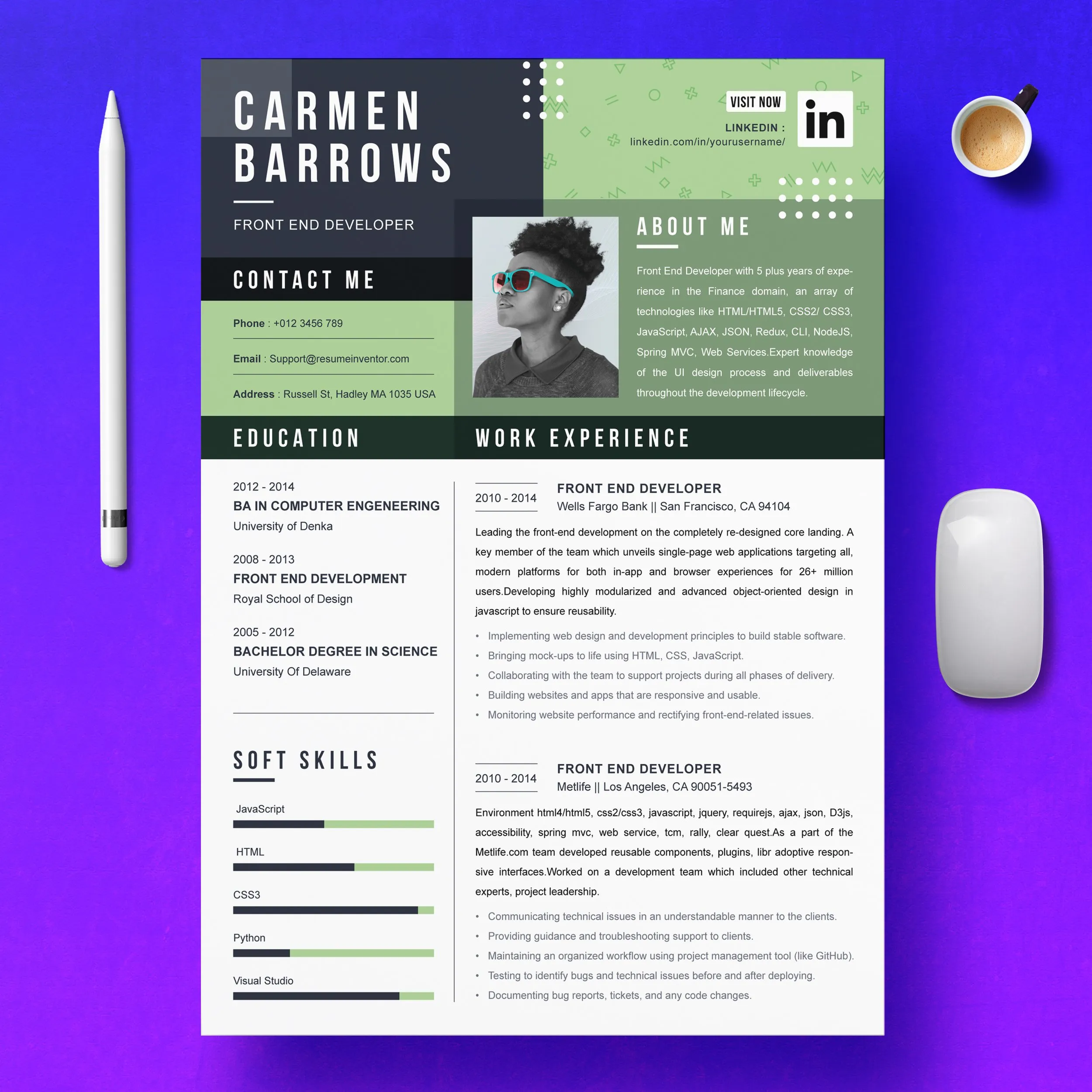
The functional template focuses on practicality and organizational efficiency. It often includes clearly defined sections and bullet points to highlight your skills and experience. This template is particularly useful for roles that require technical skills or detailed explanations. Consider using this template if you want to emphasize your abilities and demonstrate your proficiency in specific areas. To customize this type of template, focus on creating well-structured sections for each skill and experience, utilizing bullet points to highlight your achievements and quantify your results whenever possible. Ensure your content is concise, informative, and directly relevant to the job requirements.
How to Customize Your Chosen Template
Customizing a resume cover letter template in Microsoft Word is a straightforward process. First, replace the placeholder text with your personal details, including your name, contact information, and the date. Next, tailor the content of the cover letter to match the job description. Highlight your relevant skills, experiences, and achievements that align with the specific requirements of the position. You can customize the template to your personal preferences by adjusting the font style, size, and color to ensure your cover letter reflects your personality. Use the formatting tools in Word to align text, add headings, and create a visually appealing layout.
Formatting Your Cover Letter
Proper formatting is crucial for presenting your cover letter in a professional and readable manner. Start by selecting a professional font like Arial or Calibri, with a font size between 10 and 12 points. Use ample white space to prevent your cover letter from appearing cluttered, and ensure that the text is aligned correctly, either left-aligned or justified. Divide the content into clear sections, such as your contact information, salutation, body paragraphs, and closing. Utilize headings and bullet points to break up text and highlight key information, making it easier for the reader to scan and absorb the content. Consistent formatting throughout the document creates a visually appealing presentation.
Adding Your Contact Information
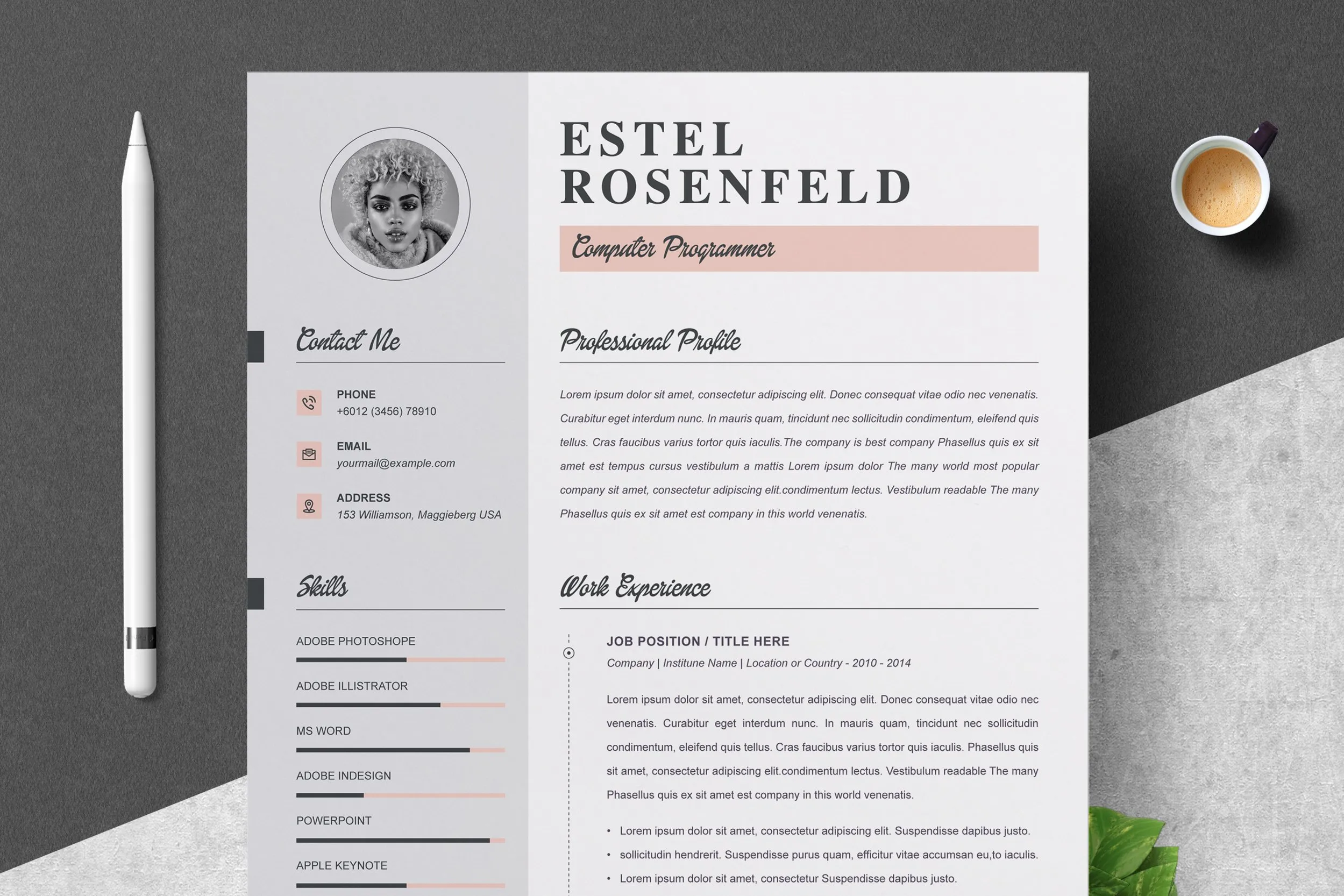
Including your contact information accurately and clearly is a must. At the beginning of your cover letter, list your full name, phone number, email address, and LinkedIn profile URL. Use a consistent format for all contact details to maintain a professional appearance. Ensure that the information is easy to read and prominently displayed, so the hiring manager can quickly contact you. It is important to verify that all contact details are correct and up to date before submitting your cover letter. Double-check that your email address is professional, and your voicemail message is appropriate, as these are the first points of contact.
Writing the Body of Your Cover Letter
The body of your cover letter is where you persuade the hiring manager to consider your application. Start with a strong opening paragraph, expressing your interest in the position and mentioning how you learned about the opportunity. In the subsequent paragraphs, highlight your relevant skills and experiences, emphasizing how they align with the job requirements. Provide specific examples of your achievements and quantify your results whenever possible to demonstrate your capabilities. Tailor each cover letter to the specific job, showing that you have thoroughly researched the company and the role. Close with a call to action, expressing your enthusiasm and desire for an interview.
Proofreading and Editing
Proofreading and editing are critical steps in preparing your cover letter for submission. Carefully review your entire document for any grammatical errors, spelling mistakes, or typos, which can detract from your professionalism and credibility. Read your cover letter aloud to catch any awkward phrasing or sentence structure issues. Ask a friend, family member, or career advisor to proofread your letter, as a fresh set of eyes can often spot errors you might have missed. Ensure that the formatting is consistent and that the content flows logically. By meticulously proofreading and editing your cover letter, you present yourself as detail-oriented and capable.
Tips for Choosing the Right Template
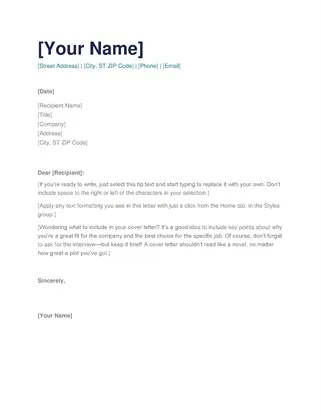
Selecting the appropriate cover letter template is vital for making a positive first impression. Consider your industry and choose a template that aligns with the expected standards. For example, a formal template is suitable for finance or law, while a more creative template may be ideal for design or marketing roles. Ensure that the template’s style matches your resume to maintain consistency in your application materials. Opt for a readable template, focusing on clarity, with sufficient white space and a straightforward layout. Select a template that aligns with your personal brand, reflecting your personality and professionalism.
Consider Your Industry
Different industries have different expectations for cover letters. Research the norms of your industry. Formal sectors such as finance and law generally prefer professional, structured templates, while creative fields such as design or marketing often allow for more innovative and visually appealing designs. Tailor your template choice to the specific industry standards. For example, if you’re applying for a position in a conservative field, choose a template that reflects those values. When choosing a template, review industry-specific cover letters and understand the level of formality, tone, and design that is typically used.
Match Your Resume
Consistency between your resume and cover letter is a significant factor in creating a cohesive application. The design and formatting of your cover letter template should complement your resume’s appearance. If your resume has a modern design, choose a cover letter template with a similar style. Ensure that the fonts, colors, and overall layout align to create a unified brand identity. Review your resume and cover letter to ensure a consistent look and feel. This cohesive design creates a more professional and organized impression.
Make it Readable

Readability is a crucial element of an effective cover letter. Prioritize templates that are easy to read, with ample white space, clear headings, and a well-organized layout. Choose a font that is legible and professional, such as Arial, Calibri, or Times New Roman. Use font sizes that are appropriate, typically between 10 and 12 points, and avoid excessive bolding or italics that may distract the reader. Divide your content into clear sections with distinct headings and bullet points to make it easy for the hiring manager to scan and find important information. Simplify the overall design to prevent the cover letter from appearing cluttered or overwhelming.
Where to Find More Templates
Microsoft Word is an excellent source of resume cover letter templates, but there are other valuable resources. Microsoft Word’s built-in template library provides a range of options to suit different needs. In addition to Microsoft Word, a wealth of free online resources offer a variety of cover letter templates to enhance your job application. Explore these resources to find the ideal template.
Microsoft Word’s Template Library
Microsoft Word’s built-in template library is a convenient starting point for finding cover letter templates. To access the templates, open Microsoft Word and search for cover letter templates in the search bar. Microsoft provides a wide selection of templates that cater to different industries and job applications. These templates are easily customizable and can be modified to suit your specific needs. Browse the available templates to find one that matches your requirements, and download it to start creating your cover letter.
Free Online Resources

Numerous free online resources offer a variety of cover letter templates. Websites such as Canva, Resume.com, and Zety provide professionally designed templates that can be customized and downloaded. These resources offer a wide range of styles and formats, allowing you to find a template that best suits your preferences. Many of these resources offer free templates, although some may require you to sign up or create an account to download them. Explore different sites and see which ones provide options that fit your job search needs.
Final Thoughts on Resume Cover Letter Templates
Using resume cover letter templates in Microsoft Word is a smart strategy for job seekers. Templates can save time, ensure professionalism, and make your application stand out. By understanding the benefits of templates, knowing how to customize them, and choosing the right one for your needs, you can create a compelling cover letter. With attention to formatting, content, and proofreading, you can improve your chances of getting noticed by employers. With the help of these templates and the advice provided, you can effectively create a compelling cover letter. Be sure to highlight your relevant experience. Good luck with your job search!
